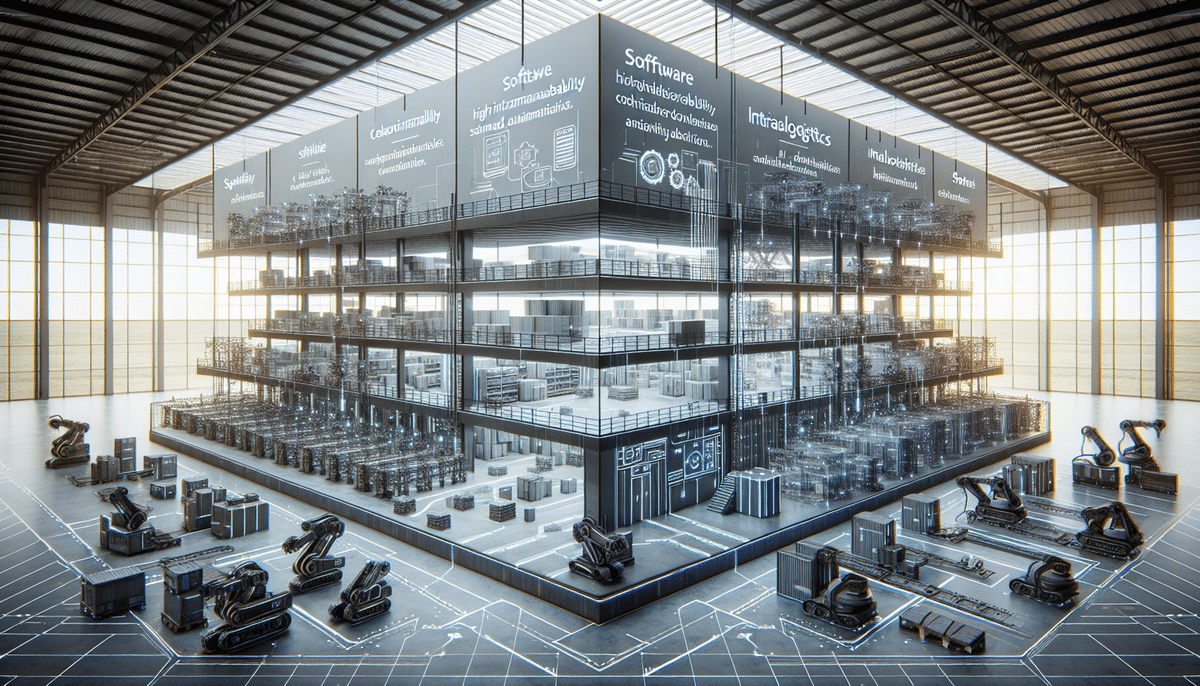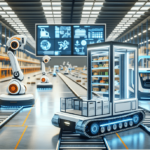Dematic vs 6 River Systems for Shopify: Choosing the Best Order Fulfillment Platform
In today's bustling e-commerce landscape, an efficient and streamlined order fulfillment system is essential for success. Shopify has emerged as a leading platform for setting up online stores, making it crucial to select the right order fulfillment platform that provides reliable and efficient service to your Shopify store. Two top contenders in this arena are Dematic and 6 River Systems, both offering a range of features and functionalities to Shopify merchants. This article provides an in-depth analysis of these two systems to help you decide which one best meets the needs of your business.
Overview of Dematic and 6 River Systems
Dematic is a comprehensive order fulfillment system that emphasizes automation and data analytics. Leveraging the latest supply chain technology, Dematic offers a wide range of features aimed at increasing efficiency and reducing costs. According to a 2023 report by Gartner, Dematic is recognized for its robust warehouse management solutions.
6 River Systems focuses on human-robot collaboration and workflow optimization. Their flagship mobile robot, Chuck, streamlines the process of picking, packing, and shipping orders. A case study by Frost & Sullivan highlights that 6 River Systems has significantly improved order accuracy for its clients.
Both systems are designed to integrate seamlessly with Shopify to provide hassle-free order fulfillment, ensuring that merchants can maintain smooth operations.
Features and Functionalities
Dematic
- Advanced warehouse management
- Order allocation and prioritization
- Intelligent robotics for automation
- Machine learning integration for predictive analytics
6 River Systems
- AI-driven order picking and packing
- Collaborative robots (Chuck) for enhanced workflow
- Real-time inventory tracking and management
While Dematic offers a more comprehensive system capable of handling a wide range of tasks, 6 River Systems focuses on optimizing specific processes such as order picking and packing. Dematic's initial investment is higher, but its advanced capabilities may offer greater long-term returns.
Pricing Comparison
Dematic
Dematic's pricing varies widely based on the size and complexity of a business's needs, ranging from tens of thousands to millions of dollars. This investment includes a customizable solution tailored to specific business requirements, often resulting in a higher return on investment. According to Payments Dive, businesses using Dematic have seen a significant decrease in operational costs over a two-year period.
6 River Systems
6 River Systems offers a flat monthly subscription fee, typically ranging from a few hundred to over a thousand dollars, depending on the business requirements. This model provides predictability in budgeting, making it appealing to smaller businesses or those with simpler needs while still offering essential automation features.
While Dematic's pricing may seem high, the extensive features and customization options can provide substantial value for larger enterprises. In contrast, 6 River Systems' subscription model offers flexibility and scalability for growing businesses.
Integration with Shopify
Both Dematic and 6 River Systems are designed to integrate seamlessly with Shopify, facilitating easy and efficient order fulfillment:
- Dematic: Provides dedicated Shopify plugins, allowing for a straightforward integration process with customizable workflows and advanced automation.
- 6 River Systems: Offers a quick and easy setup process, enabling businesses to start using the system almost immediately.
Dematic offers a broader range of integrations with other e-commerce platforms and systems, making it a more versatile solution for businesses with diverse needs. According to Shopify Partners, Dematic's integration capabilities provide greater flexibility for scaling businesses.
User Interface and Customer Support
User Interface
- Dematic: Features a comprehensive graphical interface with real-time data and analytics, suitable for detailed monitoring and management.
- 6 River Systems: Offers an intuitive interface that simplifies the picking and packing process, requiring less training time.
While Dematic's interface is powerful, it may require additional training for staff to utilize all features effectively. In contrast, 6 River Systems' interface is more straightforward, making it easier for teams to adopt quickly.
Customer Support
Dematic provides extensive customer support, including:
- Online documentation and resources
- Video tutorials and training materials
- Dedicated support team available 24/7
- Regular software updates and security patches
6 River Systems offers robust customer support with:
- Comprehensive online help resources
- Detailed tutorials and guides
- Responsive support team available during business hours
The 24/7 availability of Dematic's support team ensures that businesses can minimize downtime and maintain productivity, as highlighted in customer testimonials on Dematic's website.
Case Studies: Businesses Using Dematic or 6 River Systems for Shopify
Dematic
- Lululemon
- Sephora
- Samsung
- Adidas
- Coca-Cola
These companies have reported increased efficiency and more accurate order fulfillment using Dematic's system. For instance, Adidas reported a 30% increase in productivity and a 50% reduction in errors, while Coca-Cola saw a 25% increase in efficiency and a 40% reduction in labor costs.
6 River Systems
- DHL
- Office Depot
- Zulily
- Wayfair
- XPO Logistics
These businesses have reported improved productivity and reduced labor costs. Wayfair and XPO Logistics, for example, have noted significant improvements in order accuracy and faster processing times, enhancing overall customer satisfaction.
Future Prospects for Both Platforms in the Shopify Ecosystem
Both Dematic and 6 River Systems have a promising future within the Shopify ecosystem. As e-commerce continues to grow, the demand for efficient and streamlined order fulfillment systems that integrate seamlessly with Shopify will increase.
Dematic is expected to expand its automation and data analytics capabilities, developing new solutions that integrate with Shopify's evolving suite of tools for online merchants. This advancement will help businesses enhance their operational efficiency and adaptability in a competitive market.
6 River Systems will likely continue refining its collaborative robotic technology to better serve Shopify merchants, improving order picking accuracy and expanding the range of products its robots can handle.
Additionally, the increasing emphasis on sustainability in e-commerce presents an opportunity for both platforms. By optimizing order fulfillment processes and reducing waste, Dematic and 6 River Systems can help Shopify merchants achieve their sustainability goals, appealing to environmentally conscious consumers.
Prospective Business Owners’ Guide to Choosing Between Dematic and 6 River Systems for Their Shopify Store
Choosing between Dematic and 6 River Systems depends on the specific needs and goals of your business:
- Choose Dematic if:
- Your business requires a highly automated system with advanced data analytics capabilities.
- You have the budget for a significant initial investment.
- You need a comprehensive solution that can handle a wide range of tasks.
- You're looking for customizable workflows and extensive integration options.
- Choose 6 River Systems if:
- Your business aims to optimize workflow and reduce labor costs.
- You prefer a system that is easy to use and requires minimal training.
- You have high-volume orders and need to improve order accuracy and processing speed.
- You are looking for a flexible solution with a predictable subscription-based pricing model.
Ultimately, it's crucial to evaluate your specific operational needs, budget constraints, and long-term business goals when choosing between Dematic and 6 River Systems for your Shopify store. Consider conducting a thorough needs assessment and consulting with both providers to ensure that the chosen system aligns with your business strategy.
Conclusion
Both Dematic and 6 River Systems offer robust solutions for Shopify merchants looking to enhance their order fulfillment processes. Dematic excels in providing a comprehensive, automated system with advanced analytics, suitable for larger businesses with complex needs and significant budgets. In contrast, 6 River Systems offers a flexible, user-friendly solution with a focus on optimizing specific fulfillment processes, ideal for businesses seeking to improve efficiency without a hefty initial investment.
By carefully assessing your business's unique requirements and long-term objectives, you can select the platform that best supports your growth and operational excellence within the Shopify ecosystem.






















